Inferno
It seems like years ago that Arrow Video announced that they were going to release Inferno for the first time in the UK and, when it went before the BBFC, they demanded five seconds of cuts under the Cinematograph (Animals) Act (1937) because of the scene in which a cat can be seen eating a mouse. The uproar that followed on the Cult Labs website led to letters being written to the BBFC (and MPs) and an appeal by Arrow which ultimately saw the mandatory cuts being overturned but, not only is Inferno being released in the UK for the first time, it is being released uncut.
Although some people will have been aware of the name Dario Argento because of his 'Animals' trilogy (The Bird with the Crystal Plumage, Four Flies on Grey Velvet and Cat O' Nine Tails) and Profondo Rosso (Deep Red) it wasn't until 1977 with the release of Suspiria that Dario Argento became a living horror legend. His fusion of a nightmarish fairy tale with extremely brutal and stylised murders and, courtesy of Goblin, a pounding and unrelenting soundtrack led most critics and horror fans to consider Suspiria one of the greatest genre films ever made. After helping George A. Romero finance and distribute Dawn of the Dead in 1978, with Argento supervising the European cut, he again collaborated with his partner Daria Nicolodi to make a follow-up to Suspiria and explore another of the 'Three Mothers'.
Argento's reputation and the popularity of his previous films had brought him to the attention of the American studios and Fox wanted to distribute his next film, supervising the casting and becoming far more involved in the pre-production process than Argento ever expected. Making a couple of concessions in order to get the Italian cast he wanted, Argento was then given pretty much carte blanche to make the film that he and Nicolodi had envisaged. Fusing black magic, the occult and alchemy into another dark fairytale, Inferno builds on Suspiria to try and add some meat to the bones of the fairly loose story in his 1977 masterpiece by going into more detail about the 'Three Mothers'.
The film follows Rose and Mark Elliot, siblings who live on opposite sides of the Atlantic with Rose living in a huge Gothic apartment building in New York whilst Mark is a music student in Rome and receives a letter from Rose who has been investigating the origins of the building in which she lives. Conveniently enough, there is a bookshop next door which sells all manner of old literature and the owner, a crippled immigrant called Kazanian, is an expert on the occult. Rose has bought and read a book by an Italian architect called Varelli who, as he claims in the book, constructed three large buildings around the world which would become bases for three witches covens with each one led by a 'Mother'. Learning that the building in which she lives is probably the base for Mater Tenebrarum, the Mother of Darkness, she writes to her brother to express her fears and to inform him about everything she has read.
As part of her investigation, she follows one of the clues about the identity of the 'Mother' being in the basement and searches the cellar where she finds a hole in the floor which leads to a flooded room. Accidentally dropping her keys into the hole, Rose sees a portrait of a woman with the caption Mater Tenebrarum and grabs the keys just before a rotting corpse floats down and bumps into her. Climbing out of the hole and fleeing the scene, she is unknowingly watched by a shadowy figure.
In Rome, Mark is a little distracted after seeing a beautiful woman with a cat in one of his music lectures and, when it finishes, rushes after her leaving his letter behind without properly reading it. His girlfriend, Sara, reads the letter and tries to do some research into what Rose had written by going to the Bibitoteca Angelica where she steals Varelli's book The Three Mothers. Before she can leave the premises, she is menaced by a scarred alchemist in the basement and drops the book in order to run for her life and, returning home, meets a friend called Carlo. Understandably frightened, she wants to stay in his apartment while she gathers her wits but, with the power cutting out every so often, she and Carlo are brutally murdered by someone who knows exactly what to do with a sharp knife.
Finding his friends dead, Mark reads the bits of the letter that someone had torn up and accidentally left behind. Wanting to know what the letter was about, he phones Rose but the line goes dead and he is unable to reach her. Desperate to know what happened to her, he flies to New York and travels to her apartment building where he meets some of the residents including an old wheelchair-bound professor, his nurse and Countess Elise. She informs Mark that Rose was murdered and that, prior to her death, she had been acting strangely and talking about three mothers and various clues. One afternoon, Mark mysteriously passes out and is dragged away by a figure in a black cloak and Elise is brutally murdered. Realising that something strange is going on and that Rose was onto something, Mark tries to enlist the help of Kazanian who really doesn't want to get involved, leaving Mark to investigate the building by himself.
It is a feature of Argento's films that the narrative takes a backseat to the aesthetics, with each film resembling a dream in which different interpretations can be made. You therefore have films like Suspiria and Inferno which are visually stunning but can get increasingly confusing, bewildering or more complex depending on which way you look at things. I really don't mind the fact that these films aren't cut and dried with one single explanation and think that it adds to their longevity and helps them stand up to repeated viewings. The fact that the 'student' that Mark sees is never given a name, introduced or had a role properly explored never bothered me and I always assumed that she would end up being the Mother of Tears, something that was sadly not to be.
I'm not exactly sure where Inferno stands up in Argento's oeuvre and consider it as below Suspiria, Profondo Rosso and Tenebrae but above most of his other films, particularly his recent output. It is a tour de force piece of direction with intelligent writing by Daria Nicolodi and watching it is a bit like being in the middle of a waking nightmare as you're not sure where it began or how it's going to end -- it just happens. Inferno is a film that I have seen many times and will continue to watch, never grown tired of the occasionally hallucinatory imagery, dreamlike plot and wonderfully orchestrated murder scenes. The fact that it is such a great movie makes it all the more puzzling that Fox refused to distribute it theatrically in the United States as they really could have capitalised on the popularity of Leigh McCloskey, who would go on to become one of the most famous actors in the world the next year with his role as Lucy Ewing Cooper's husband, Mitch Cooper in Dallas.
The Disc
Extra Features
When you select 'play', the disc autoplays with an introduction by Daria Nicolodi which can be skipped so you don't have to sit through it every time you want to watch Inferno (I can't remember how many times I've seen William Friedkin it that salmon pink cardigan introducing The Exorcist and skipping through it!) It is only a brief introduction in which she says that she is much nicer than her character and hopes that everyone in the UK enjoys watching the film.
Disc one, the Blu-ray Disc, contains several extra features (all in 1080p) which are:
Dario's Inferno which is an extensive interview with the horror maestro who covers various topics including the trials and tribulations with Fox when making Inferno, casting, his approach to the subject material and what he thinks of the film now. It is quite candid interview and it helps that Argento gives his answers in Italian so he could speak more fluidly as his English is far from fluent. The subtitles are clear, error free and easy to follow.
Acting in Hot Water: An Interview with Daria Nicolodi is more interesting than I was expecting as she is extremely candid about her career behind and in front of the camera, her relationship with Dario Argento and what she thinks about Mother of Tears. Sadly, on this last point, she is not as forthcoming as you do she really wants to be as I could tell she was absolutely dying to slate the film and give it a real kicking!
The Other Mother: Making of the Black Cat follows the unofficial sequel to Inferno, Luigi Cozzi's Black Cat which was made in 1989 and has never be publicly shown. This piece contains clippings from the film as well as contributions from Luigi Cozzi and Daria Nicolodi who denies having anything to do with it and says that it really isn't anything to do with either Suspiria or Inferno.
The Inferno Q&A with Irene Miracle, Keith Emerson and Tim Lucas is exclusive to the Blu-ray as it wouldn't fit on the DVD of disc one and is footage of a Q&A from many years ago with Tim Lucas showcasing his encyclopaedic knowledge of all things Argento, Keith Emerson talking about his experience scoring the film whilst living in the Bahamas and trying to keep his young sons out of the recording studio and flirting outrageously with Irene Miracle saying what a joy her 'wet T-shirt' moment was!
X Marks the Spot which is more of an Easter Egg than a featurette as it doesn't appear on the menu and you have to locate it by selecting 'setup' and then press down which will make the option appear by the 'o' on the menu screen. This provides you with a further interview with Argento, this time in English, in which he expands on topics covered in Dario's Inferno, plus talking about his time with Mario Bava who did uncredited special effects work on the film.
The second disc is a DVD and begins with the 57 minute documentary Dario Argento: An Eye for Horror which is narrated by Mark Kermode and, with contributions from John Carpenter, Tom Savini and George A. Romero, goes through much of Argento's career and explores why he is such a great horror director with clips from most of his films. This is probably as comprehensive a documentary about Argento as you will get and, if you need any more information, you'll probably need to buy something like Alan Jones' superb book Profondo Argento.
Dario Argento and Lamberto Bava on Inferno is a nine minute piece begins with an introduction by Dario Argento who then goes on to talk about the process of developing the script and filming before going on to talk about Mario Bava and his son Lamberto who also talks at length about the film and his father, particularly his contribution to the special effects. It's quite funny that Lamberto Bava says that he spent so much time throwing cats at actors that it now can't stand the smell of cat hair and, every time he sees a cat, he thinks of Inferno.
In addition, the disc features a Dario Argento trailer gallery (all 39 minutes of it!), the Spanish trailer and the international trailer.
Inside the box you will find six postcards showing artwork from around the world, a double sided poster and a booklet with a brand-new article by Argento expert Alan Jones. As for the artwork, it has been dubbed the 'big arse' by those on Cult Labs and doesn't entirely fit in with the general theme of Inferno, despite being inspired by one of the most memorable scenes, but it is fairly eye-catching and besides, if you don't like it, there are three excellent alternatives including the semi-obligatory skull/gas mask cover.
The Picture
I was impressed by the R1 Anchor Bay DVD and was slightly sceptical that a high definition picture would be that much better given the age of the film stock but I needn't have worried as, from the opening shot, it is abundantly clear that this is on a whole new level in terms of the contrast levels, clarity and colours. It is amazing how much background detail was 'lost' on the standard definition transfer and how crisp and clear everything now looks. Thankfully, the restoration process hasn't gone overboard on DNR or edge enhancement and it just looks like the DVD but much sharper and with much better colours and contrast levels.
Although Argento didn't use something so outrageous as Technicolor film from the 1950s (as he did to make the colours in Suspiria so bold), Inferno is stylised, beautifully lit and shot with typical brilliance by Argento. Such touches as having pink streetlamps really add to the atmosphere and the otherworldly sense of the film which seems more surrealistic and dreamlike the more you watch it.
The Sound
As well as the original 2.0 stereo track (courtesy of DTS), you have the option of watching it with the Italian mono or the DTS-HD Master Audio 5.1 track. I'm always a little sceptical of films that were recorded in stereo being provided with a surround track but this is one of the very best alternatives, putting the sound predominantly through the front channels but, when the tempo and tension really escalate, the surrounds kick in to draw the viewer even deeper into the film.
Just as the score by Goblin was such a feature of Suspiria, Argento decided against another collaboration Goblin but decided to use another Prog Rock artist in the form of Keith Emerson of Emerson, Lake and Palmer fame. Although this was Emerson's first film soundtrack, it seems he knew what he was doing, acting under instruction and basing his composition on Verdi's Requiem although with different time signatures to suit the specific scene. If you close your eyes and listen to Emerson's score, it is amazing how romantic it is and the juxtaposition with the events on screen just serves to heighten the horror.
Final Thoughts
I was extremely pleased when Arrow announced that they were planning to release Inferno and, with every announcement on the Cult Labs website, my anticipation grew and grew until I was literally counting down the days until it was released. Fortunately, I was provided with a copy in order to write this review so a complete nervous breakdown was avoided! Now that I have watched the film in its remastered high definition format with all three audio tracks, gone through the extras, read the booklet and looked at the poster, I have to say that Arrow have done an absolutely superb job bringing one of Dario Argento's finest films to the UK market in a format that will (or should) please everyone who has been looking forward to it for as long as I have.
The film is quite remarkable and makes it all the more sad that the concluding chapter in the trilogy, The Mother of Tears, ended up being such a disappointment. Inferno sees Argento round about the peak of his powers with meticulously designed scenes and sequences, a memorable score by Keith Emerson and a splendid extras package to complement the brilliant movie.
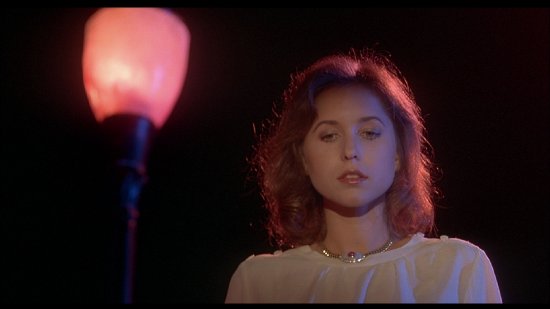
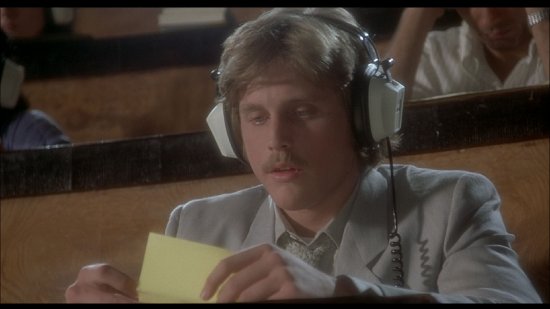
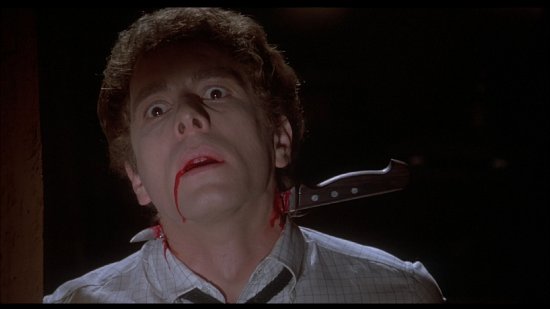
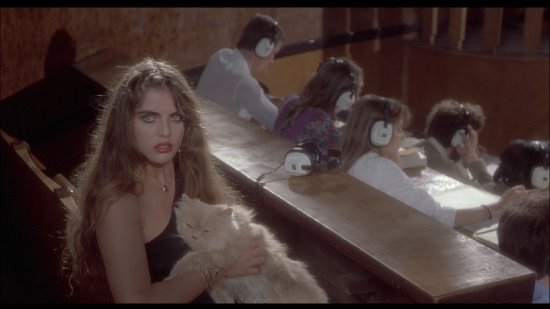
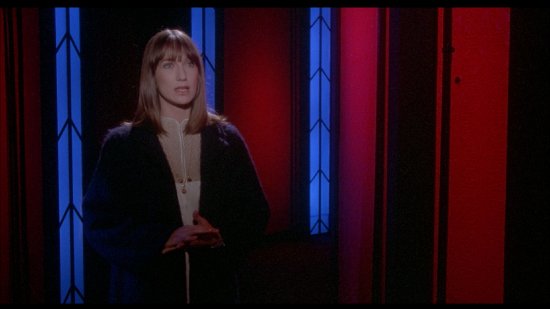

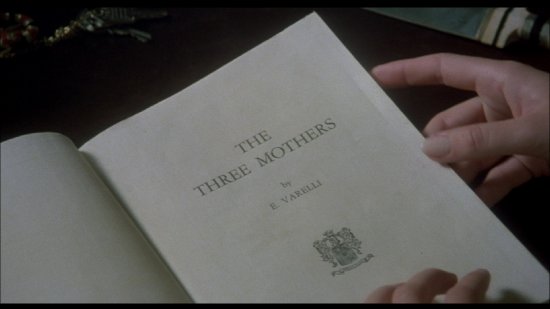
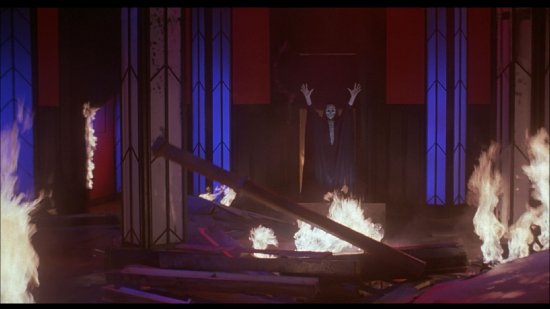
Your Opinions and Comments
Be the first to post a comment!